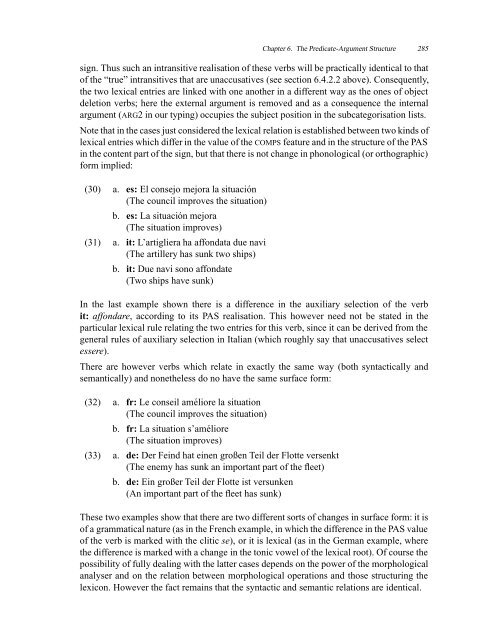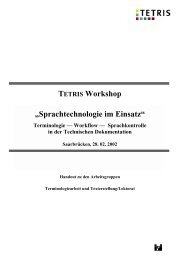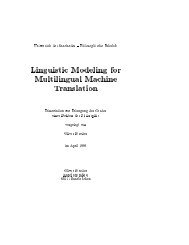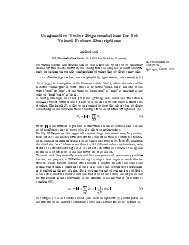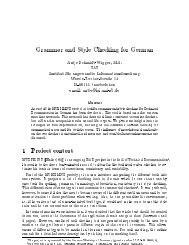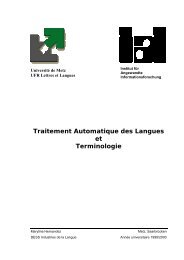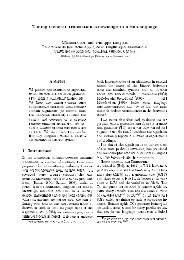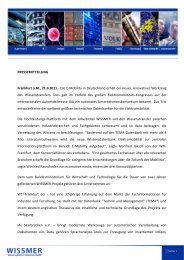Predicate-Argument Structure
Predicate-Argument Structure
Predicate-Argument Structure
You also want an ePaper? Increase the reach of your titles
YUMPU automatically turns print PDFs into web optimized ePapers that Google loves.
Chapter 6. The <strong>Predicate</strong>-<strong>Argument</strong> <strong>Structure</strong> 285<br />
sign. Thus such an intransitive realisation of these verbs will be practically identical to that<br />
of the “true” intransitives that are unaccusatives (see section 6.4.2.2 above). Consequently,<br />
the two lexical entries are linked with one another in a different way as the ones of object<br />
deletion verbs; here the external argument is removed and as a consequence the internal<br />
argument (ARG2 in our typing) occupies the subject position in the subcategorisation lists.<br />
Note that in the cases just considered the lexical relation is established between two kinds of<br />
lexical entries which differ in the value of the COMPS feature and in the structure of the PAS<br />
in the content part of the sign, but that there is not change in phonological (or orthographic)<br />
form implied:<br />
(30) a. es: El consejo mejora la situación<br />
(The council improves the situation)<br />
b. es: La situación mejora<br />
(The situation improves)<br />
(31) a. it: L’artigliera ha affondata due navi<br />
(The artillery has sunk two ships)<br />
b. it: Due navi sono affondate<br />
(Two ships have sunk)<br />
In the last example shown there is a difference in the auxiliary selection of the verb<br />
it: affondare, according to its PAS realisation. This however need not be stated in the<br />
particular lexical rule relating the two entries for this verb, since it can be derived from the<br />
general rules of auxiliary selection in Italian (which roughly say that unaccusatives select<br />
essere).<br />
There are however verbs which relate in exactly the same way (both syntactically and<br />
semantically) and nonetheless do no have the same surface form:<br />
(32) a. fr: Le conseil améliore la situation<br />
(The council improves the situation)<br />
b. fr: La situation s’améliore<br />
(The situation improves)<br />
(33) a. de: Der Feind hat einen großen Teil der Flotte versenkt<br />
(The enemy has sunk an important part of the fleet)<br />
b. de: Ein großer Teil der Flotte ist versunken<br />
(An important part of the fleet has sunk)<br />
These two examples show that there are two different sorts of changes in surface form: it is<br />
of a grammatical nature (as in the French example, in which the difference in the PAS value<br />
of the verb is marked with the clitic se), or it is lexical (as in the German example, where<br />
the difference is marked with a change in the tonic vowel of the lexical root). Of course the<br />
possibility of fully dealing with the latter cases depends on the power of the morphological<br />
analyser and on the relation between morphological operations and those structuring the<br />
lexicon. However the fact remains that the syntactic and semantic relations are identical.


